* (restored/expanded)
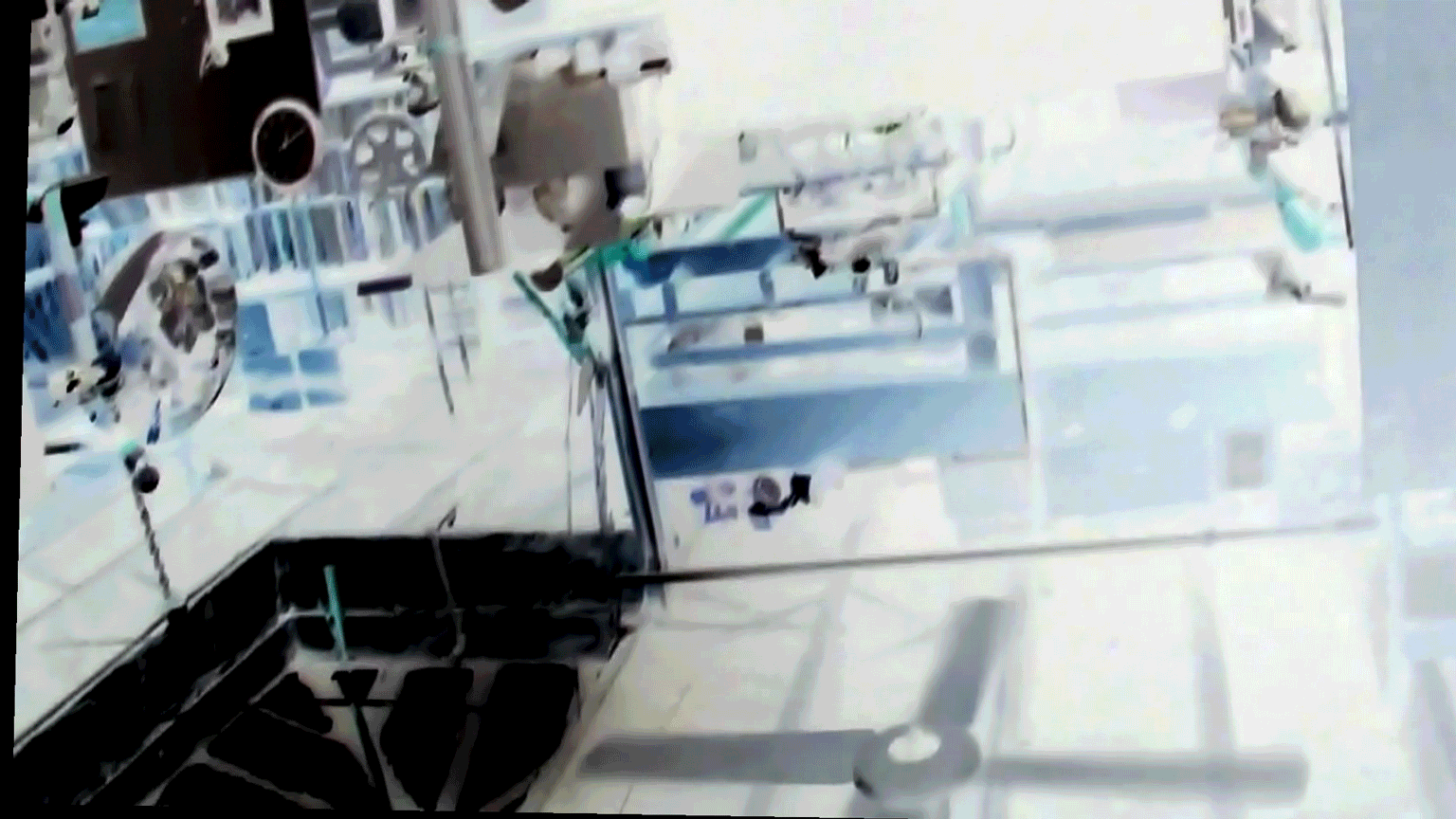
‘A pioneer of the American film avant-garde of the 1960s and ’70s, Ken Jacobs is a central figure in post-war experimental cinema. From his first films of the late 1950s to his recent experiments with digital video, his investigations and innovations have influenced countless artists.
‘A New Yorker by birth, Jacobs graduated from City University to find himself in the midst of the downtown art scene of the 1960s, which included artists Robert Rauschenberg and Andy Warhol, beat writers Allen Ginsberg and Jack Kerouac; and the experimental theater troupes of Trisha Brown and Yvonne Rainer. Although Jacobs had studied painting with Hans Hoffman, he quickly gravitated to film, finding kindred spirits in radical filmmakers such as Jonas Mekas and Hollis Frampton. An early friendship with Jack Smith yielded several collaborations, including the seminal underground films Blonde Cobra (which Jonas Mekas dubbed “the masterpiece of Baudelairean cinema”) and Little Stabs at Happiness, as well as a Provincetown beach-based live show, The Human Wreckage Review.
‘Jacobs has long been a cinema activist. He was an integral part of Manhattan’s burgeoning alternative film scene, which included venues such as the Film-Makers’ Cooperative and The Bleecker Street Cinema (which notoriously premiered Blonde Cobra with Smith’s Flaming Creatures) as well as his own loft, where the Kuchar brothers first screened their 8mm work. In 1966, he and his wife Flo founded Millennium Film Workshop, and he was a cofounder of one of the country’s earliest departments of cinema, at Binghamton University.
‘Jacobs has always been interested primarily in the act of viewing, rather than in textual decoding or analysis. As he points out, “my work is experiential, not conceptual. I want to work with experiences all the time.” In this respect, his breakthrough was Tom, Tom the Piper’s Son (1969-71). A landmark work of appropriation, the film takes as its source material a ten-minute short from 1905. During the course of Jacobs’ two-hour film, this fragment from the dawn of cinema is subjected to extensive and varied re-photography, including manipulations of speed, light, and motion, as well as the minute examination of abstractly enlarged areas of the frame. A masterpiece of cinematic deconstruction, Tom, Tom the Piper’s Son is, in its total concentration on the formal and material properties of the medium, perhaps the quintessential work of 1970s structuralist filmmaking. It was also an indication of the direction in which Jacobs would proceed, wherein actors and narrative would fall away, replaced by a concentration on the rigorous pleasures of the cinematic unconscious. As he has suggested, “there’s already so much film. Let’s draw some of it out for a deeper look, toy with it, take it into a new light with inventive and expressive projection. Freud would suggest doing so as a way to look into our minds.”
‘In later films such as Perfect Film (1986) and Opening the Nineteenth Century: 1896 (1990), Jacobs continued to explore his pioneering appropriation strategies. His interest in performance has never waned, however, as evidenced by Nervous System, a live show incorporating two film projectors, a propeller, and individual filters through which audience members view the double image. Writes Jacobs: “The throbbing flickering is necessary to create ‘eternalisms’: unfrozen slices of time, sustained movements going nowhere and unlike anything in life.” Jacobs’ recent video work, such as Flo Rounds A Corner (1999), have successfully transferred the “eternalisms” effect to the digital realm.
‘Jacobs’ insistence on cinema as a “development of mind” can be seen, despite his protestations to the contrary, as a conceptual approach to art-making practice, one that has yielded groundbreaking work across media. In his activism, film, performance, and video, he has consistently expanded the practice of the avant-garde moving image. Whether undertaking archaeological journeys to the birth of cinema, or scrutinizing the interstices of new digital technologies, Jacobs’ work investigates, provokes, and draws power from the mysteries of the nature of human vision.
‘Ken Jacobs was born in 1933 in Brooklyn, New York. He has received numerous awards, including the Maya Deren Award, a John Simon Guggenheim Fellowship, as well as grants from the National Endowment for the Arts, the Rockefeller Foundation, and the New York State Council on the Arts. In 1969, with the help of Larry Gottheim and Gottheim’s students (one of whom was J. Hoberman, senior film critic for the Village Voice), Jacobs began the Cinema Department at SUNY Binghamton and taught there until 2002. His films, videos and performances have received international venues such as the Berlin Film Festival, the London Film Festival, the Hong Kong Film Festival, the New York Film Festival, the American Museum of the Moving Image, Astoria, New York; the Whitney Museum of American Art, New York; and The Museum of Modern Art, New York. He was a featured filmmaker at the International Film Festival Rotterdam in 2004.’ — Electronic Arts Intermix
____
Stills
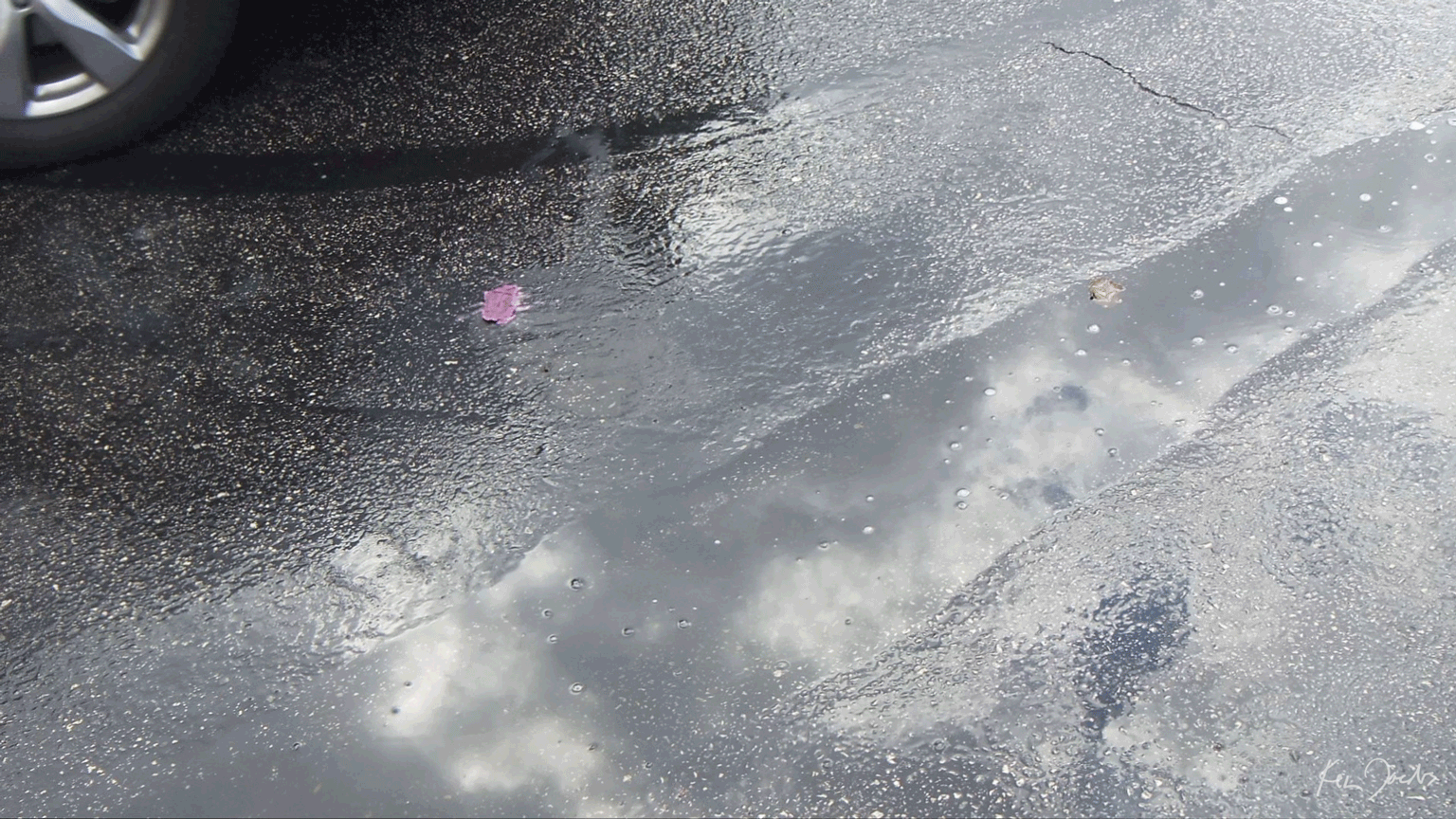




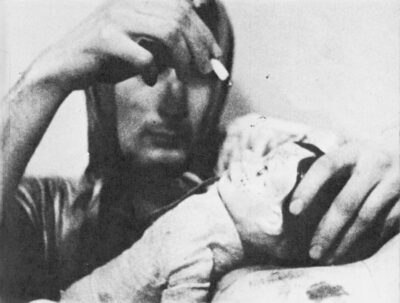





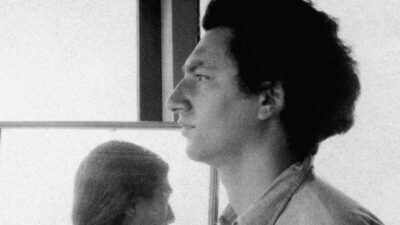
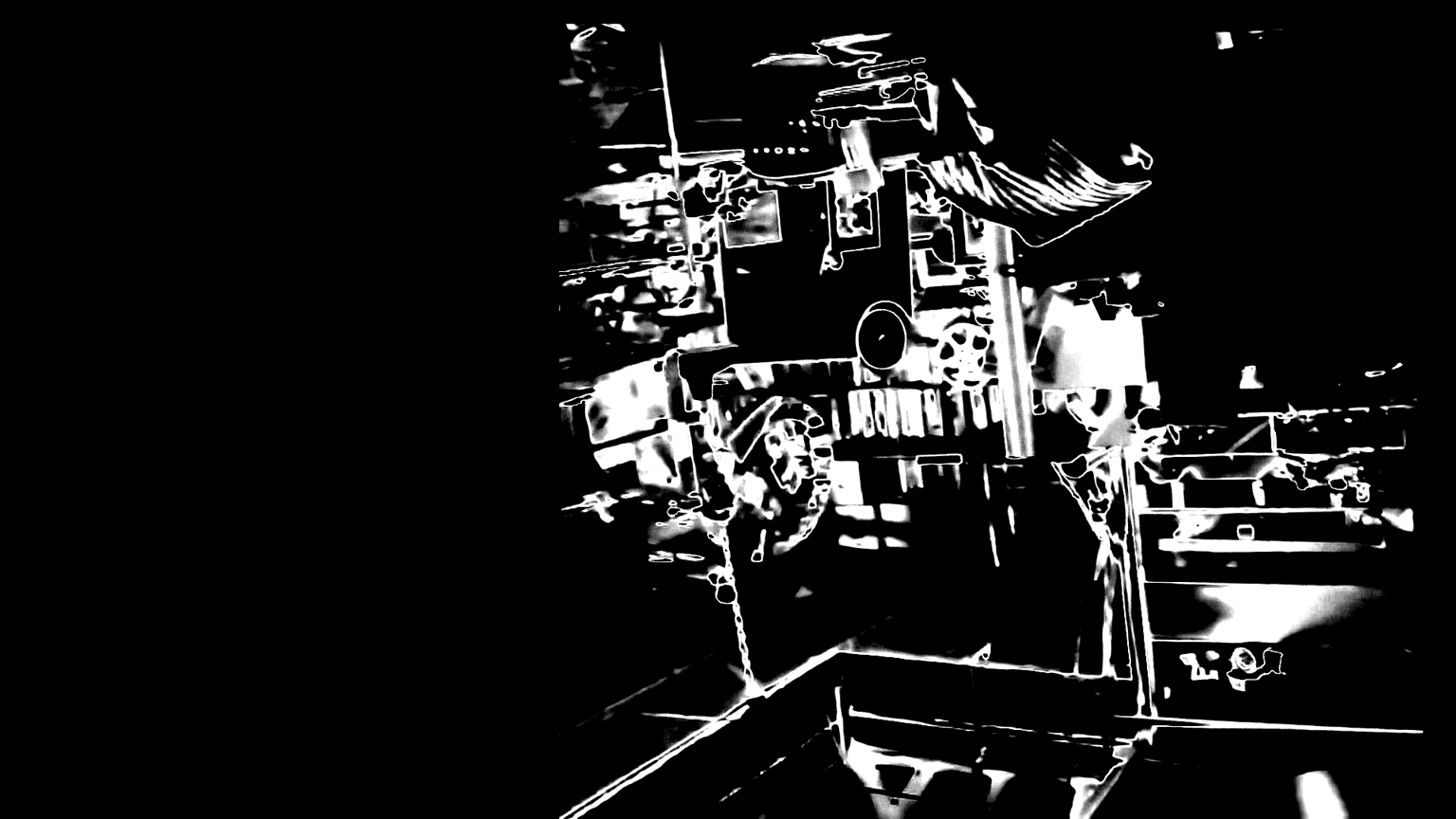
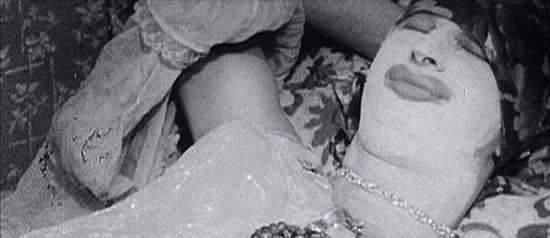



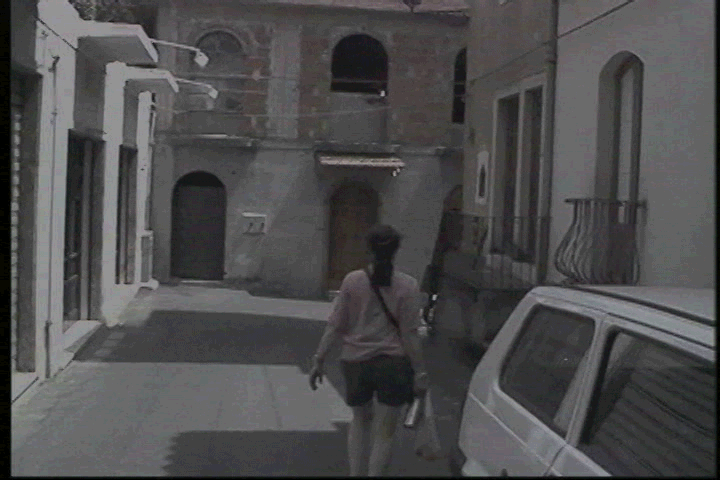



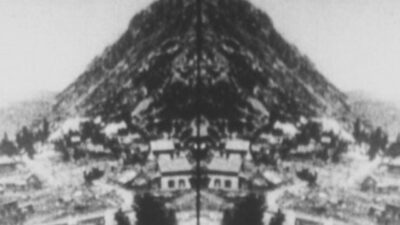
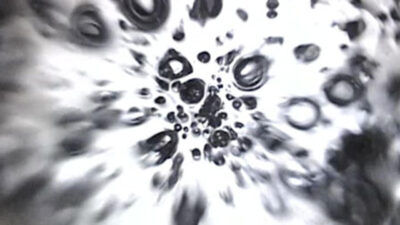

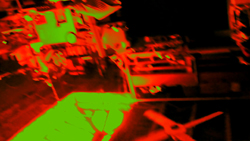
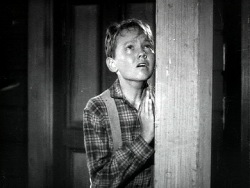

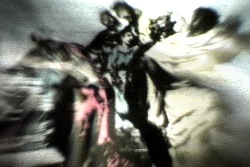
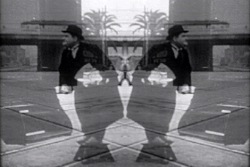
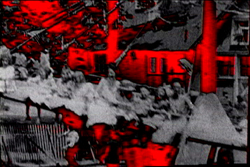





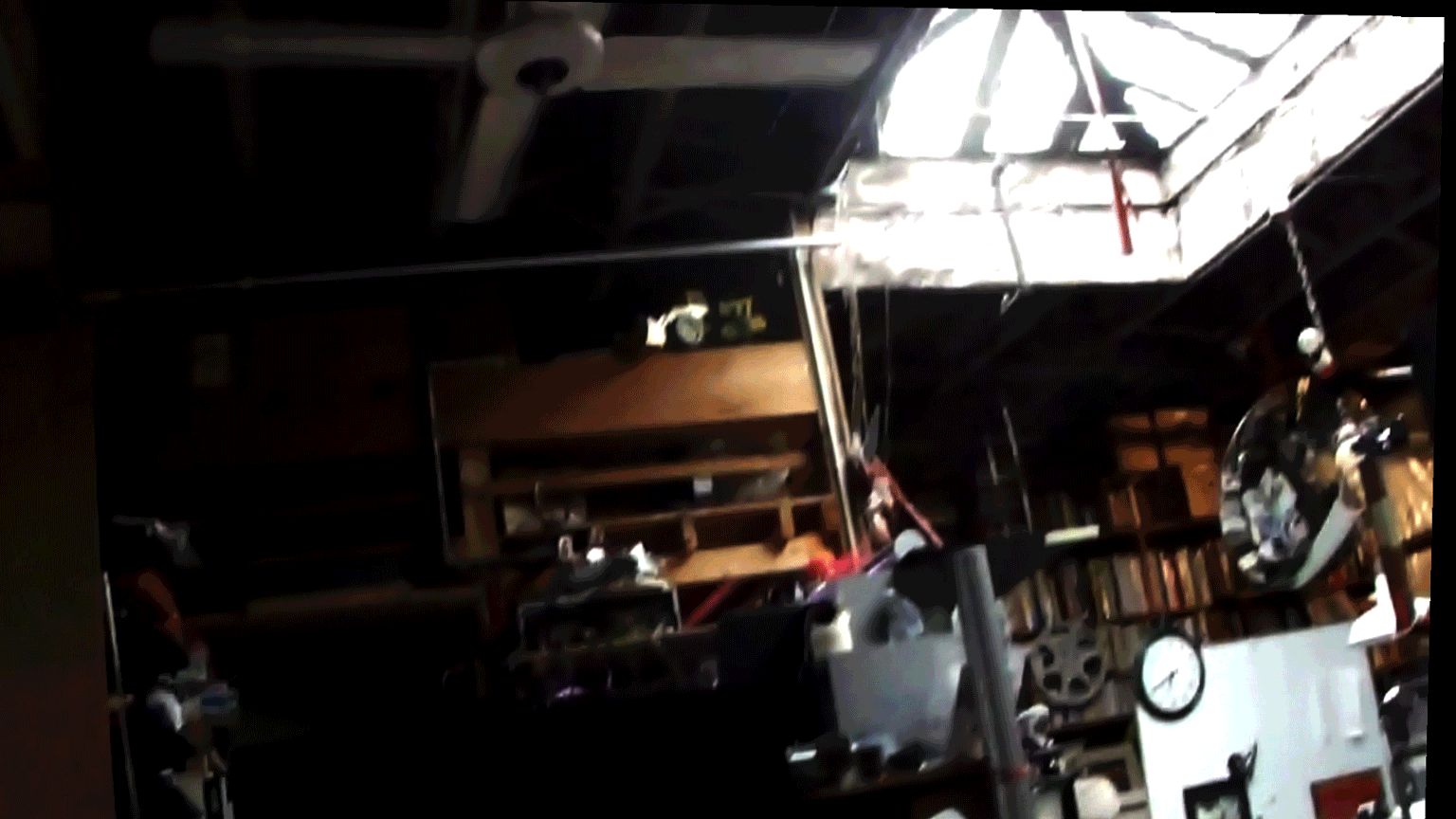



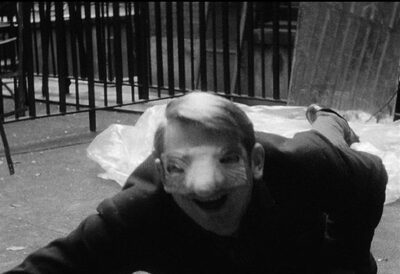

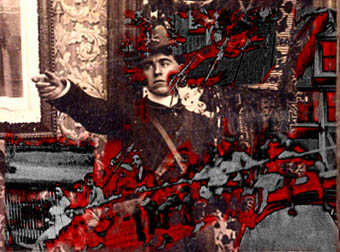


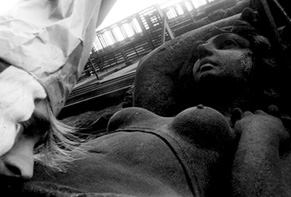

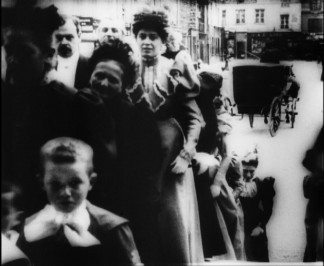



______
Further
Ken Jacobs @ IMDb
Ken Jacobs on Vimeo
Ken Jacobs @ Filmmakers Cooperative
Ken Jacobs @ Ubuweb
Ken Jacobs @ Lightcone
Ken Jacobs on The Polar Express, 3D, and Religion
Interview with Ken and Flo Jacobs. Part 1: Interruptions
KEN JACOBS: THE DEMIURGO OF THE MOVING IMAGE
Tony Pipolo on Ken Jacobs’s The Guests
Star Spangled To Death Site
Paracinéma, Flicker et 3D : entretien avec Ken Jacobs
Ken Jacobs @ PENNSOUND
Ken Jacobs and the Perverted Archival Image
An Interview with Ken Jacobs
NOT EVEN ACTING WITH KEN JACOBS
A PRIMER ON EXPERIMENTAL FILM LEGEND KEN JACOBS
KEN JACOBS IN 3 DIMENSIONS!
Ken Jacobs @ Senses of Cinema
Ken Jacobs @ mubi
Artifact Bonfire: Ken Jacobs and Reichstag 9/11
Paracinema, Flicker and 3D. Interview with Ken Jacobs
The Nervous Art of Ken Jacobs
Ken Jacobs: Digital Revelationist
Optic Antics: The Cinema of Ken Jacobs
Ken Jacobs: A Matter of Life and Depth
“Movies are All People Know” An Interview With Ken Jacobs
AN INTERVIEW WITH KEN JACOBS
KEN JACOBS / An Email About Jack Smith (and the Cheap Shoes)
Three essays by Ken Jacobs
____
Extras
Ken Jacobs: A Pioneer of Avant-Garde Film
KEN JACOBS – FROM ORCHARD STREET TO THE MUSEUM OF MODERN ART (Trailer)
Jonas Mekas on Ken Jacobs
Conversations with History: Ken Jacobs
______
Interview

Julie Hampton: How do you see your films as being different from what we have come to expect from cinema?
Ken Jacobs: Well, most films are about problems. They don’t pose problems. They’re not immediate experience. They’re vicarious experience. Well, that’s not entirely true . There are lots of films that are designed to offer you very strong immediate experiences and at the same time they occupy you with what’s going to happen to somebody else we are identifying with.
JH: Yes. We’re living through them.
KJ: But there’s a lot of work that exists other than mine where you’re having the immediate experience. You’re confronting something. You’re going into the temple of doom.
JH: In cinema?
KJ: No, I mean in art. When we talk about film we mostly consider the movies. We mostly consider photoplay film theater with actors. There are a lot of other things where you meet up with the problem of the work and you surmount it and hopefully you are rewarded with a new way of receiving pleasure.
I should go back to the beginning and tell you that initially I was torn between the formal development of art and film and needing to do something effective socially. And I only released myself from this second obligation a few years ago.
JH: Is this the beginning of your Nervous Systems work then?
KJ: Yes I think it is. I think that Bi-temporal Vision: The Sea is the clearly in the realm of the abstract. That’s not to say it is without meaning for me. It absolutely is a film about crises. It’s absolutely about “to be or not to be” for me. These words abstract are really not satisfying for me because they sound utterly cerebral which these works are not.
JH: As intangible.
KJ: When we talk about abstract we talk about a kind of removal from the immediate but these works are all very, very experiential. They’re very involved in the immediate for me. They really rise out of crises. As in …Did you see The Marriage of Heaven and Hell ?
JH: Yes. It was very beautiful.
KJ: I was very unhappy with the number of lights that were left on in the auditorium. Energy is very central to my work, energy excited by pounding extremes: black/white, light/no light. Using the flicker elicits energy. In painting when you try to paint absolute polarities of light and dark in the world, the only way to get close to that with paint is by placing black next to white to make the white seem whiter and visa versa. Compared to actual black and actual white in the world they’re jokes. They’re somewhere in the middle of the gray scale. So one exacerbates and creates an optical mental impression of much more light and vibrancy by smashing the polarities together. So because of this and for other reasons I need a black room and a bright reflective screen which I didn’t get at that auditorium.
JH: It was a bit hard to see in some ways. Is this what you mean?
KJ: No. The work goes through sections of very low light levels and it builds at certain points a rich effulgence of light. The moving along and lowering and lifting of light levels is very, very important in this piece. The screen was very light absorbent so I lost a lot of light in that screen. I had to use low light levels so where before it demands the audience to make an effort to see and reach across to really see what’s going on, I’m afraid that it might have just submerged because of all the other light competition.
JH: The fact that I was seeing figures that were dissolving into each other depends on the nature of the light?
KJ: In this particular incidence the low light levels change the temperature of the projection bulbs. And when they change the temperature they change the color. So these very elusive strange shiftings of color take place in normally what would be called black and white film. I’m making use of different color temperatures coming from the bulbs. So it’s very, very subtle. Using the low light levels changes the character of the relief. A whole array of changes take place by adjusting the light level. There is no way of getting away from it if I want to do this piece.
JH: What does it mean that the brain is registering , while viewing your work, phantom chroma? Is this chroma that we think we are seeing that is really temperature?
KJ: I think it’s partly that. Instead of having local color you have color fields and they are not identical color fields coming from the two projectors which in turn set up reciprocating complementary colors in the brain which you wouldn’t be able to see if it was local color with everything brightly lit and everything separated by it’s own color. Oranges looking orange etc. So the overall color sets up complementary colors that the brain supplies. Then they begin working with the colors that are there.
JH: That’s great. It’s quite an amazing depth that you are involving the viewer in. How long have you been working with these kinds of techniques?
KJ: Well, I always have. What’s new for me is rejecting the obligation to answer to social problems. I always was involved with making a formal work.
JH: By formal you don’t mean conceptual, do you?
KJ: No my work is experiential, not conceptual. I want to work with experiences all the time. I don’t even understand most conceptual work. I don’t get it. In that way I do relate to the movies that want to offer you some kind of visual experience. Except you’re the protagonist. You’re entering the temple of doom; a new kind of growth. You have to find out what is in this thing for yourself and I’m offering it. What happened for me three years ago was a heart bypass operation. I haven’t done works of social comment or inquiry since. Even though these works were about what was going on they were always enfolded in a formal development and offered experience, they were never posterized. I never sacrificed the idea to make a musical work of some sort of cinematic development.
JH: So you were always working on that and now you’re thinking about your life and trying to get the most out of it while you are here.
KJ: That’s right…life/death. I’m not in argument with it. I’m not Captain Ahab fighting the white whale. I’m just confronting it.
_____________
18 of Ken Jacobs’s 42 films
_____________
Orchard Street (1955)
‘This short film documents the daily life of the goings-on on Orchard Street, a commercial street in the Lower East Side New York City.’ — Letterboxd
the entire film
_____________
Little Stabs at Happiness (1959)
‘Material was cut in as it came out of the camera, embarrassing moments intact. 100′ rolls timed well with music on old 78’s. I was interested in immediacy, a sense of ease, and an art where suffering was acknowledged but not trivialized with dramatics. Whimsy was our achievement, as well as breaking out of step.’ — Ken Jacobs
the entire film
_______________
Blonde Cobra (1963)
‘This legendary film features artist Jack Smith in what Jacobs calls “a look in on an exploding life, on a man of imagination suffering pre-fashionable lower East Side deprivation and consumed with American 1950’s, 40’s, 30s disgust. Jacobs did little of the shooting himself, instead drawing on two unfinished films shot by Bob Fleischner. With its dissociative editing strategies, wild costumes, and scraps of music and voiceover, this baroque portrait deserves Jonas Mekas’ recommendation as “the masterpiece of Baudelairean cinema.’ — Manufacturing Intellect
the entire film
_______________
Window (1964)
‘The moving camera shapes the screen image with great purposefulness, using the frame of a window as fulcrum upon which to wheel about the exterior scene. The zoom lens rips, pulling depth planes apart and slapping them together, contracting and expanding in concurrence with camera movements to impart a terrific apparent-motion to the complex of the object-forms pictured on the horizontal-vertical screen, its axis steadied by the audience’s sense of gravity. The camera’s movements in being transferred to objects tend also to be greatly magnified (instead of the camera the adjacent building turns). About four years of studying the window-complex preceded the afternoon of actual shooting (a true instance of cinematic action-painting). The film exists as it came out of the camera barring one mechanically necessary mid-reel splice.’ — K. J.
the entire film
_________________
Tom, Tom, the Pipers Son (1969)
‘Cinematography ass’t., Jordan Meyers. Negative-matching assistance by Judy Dauterman. Original 1905 film shot and probably directed by G. W. ‘Billy’ Bitzer, rescued by Kemp Niver via a paper print filed for copyright purposes with the Library of Congress. Reverently examined here, a new movie almost incidentally comes into being. Ghosts! Cine-recordings of the vivacious doings of persons long dead. The preservation of their memory ceases at the edges of the frame (a 1905 hand happened to stick into the frame. . . it’s preserved, recorded in a spray of emulsion grains). One face passes ‘behind’ another on the two-dimensional screen. The staging and cutting is pre-Griffith. Seven infinitely complex cine-tapestries comprise the original film and the style is not primitive, not uncinematic, but an inspired indication of a path of cinematic development whose value has only recently been rediscovered. My camera closes in only to better ascertian the infinite richness (playing with fate, taking advantage of the loop-character of all movies, recalling and varying some visual complexes again and again for particular savoring), searching out incongruities in the story-telling (a person, confused, suddenly looks out of an actor’s face), delighting in the whole bizarre human phenomena of story-telling itself and this within the fantasy of reading any bygone time out of the visual crudities of film: dream within a dream! And then I wanted to show the actual present of film, just begin to indicate its energy. A train of images passes like enough and different enough to imply to the mind that its eyes are seeing an arm lift, or a door close: I wanted to ‘bring to the surface’ that multi-rhythmic collision-contesting of dark and light two-dimensional force-areas struggling edge to edge for identity of shape. . . to get into the amoebic grain pattern itself-a chemical disdispersion pattern unique to each frame, each cold still. . . stirred to life by a successive 16-24 f. p. s pattering on our retinas, the teeming energies elicited ( the grains! the grains!) then collaborating, unknowling and ironically, for form the always-poignant-because-always-past illusion. Important: this film MUST be projected BIG and BRIGHT and IN FOCUS’. — K. J
the entire film
________________
Perfect Film (1986)
‘The story goes that Ken Jacobs‘ 1986 work Perfect Film is literally a found film: the experimental filmmaker came upon the reels at a shop, bought them, made a print, tweaked the volume, and released the piece as a raw untouched document (consisting of—in this case—footage of news interviews following the death of Malcolm X). A possibly satisfactory example of that always suspicious term “pure cinema”, Perfect Film is Jacobs’ humbled gesture towards the integrity of the cinematographic image, resurrecting a discarded arbitrary artifact to not simply present what it was…but to establish what it is and what it can be.’ — The Seventh Art
the entire film
_______________
The Georgetown Loop (1996)
‘First screened as part of Jacobs’ “Nervous System” film performance, The Georgetown Loop is based on an archival film from 1903, which Jacobs pairs with its mirror double to produce a kaleidoscopic two-screen projection. The original film depicts a journey shot from the cab of a train passing through the Colorado Rockies, and, in this hypnotic new form, comes to suggest the movement of consciousness itself. Writes Jacobs: “I’ve called it the first landscape film deserving of an X-rating, and that it is, yet its secret subtitle is — I must whisper — (Celestial Railway).”‘ — EAI
the entire film
________________
Circling Zero: We See Absence (2002)
‘Jacobs offers a stream of silent, digitally simplified shots of the collapsing towers and the surrounding metropolitan area—a far cry from the counterpointing sound clips in his previous treatment of September 11, Circling Zero: We See Absence.’ — Reverse Shot
the entire film
________________
Star Spangled to Death (2004)
‘Almost 50 years in the making — filming began in 1956 — Ken Jacobs’s 440-minute avant-garde epic was named the best film of 2004 by J. Hoberman of The Village Voice. A history of 20th-century politics and culture communicated through a crazy quilt of found film, including a dancelike performance by Jack Smith (Flaming Creatures) as The Spirit of Life but Not of Living and sustained rants by the downtown character Jerry Sims as Suffering, it’s the ultimate underground movie, subversive and frequently hilarious.’ — The New York Times
the entire film
_______________
Celestial Subway Lines / Salvaging Noise (2005)
‘Celestial Subway Lines/Salvaging Noise, the DVD version of a live multi-media collaboration between Jacobs and musicians John Zorn and Ikue Mori, strives for the aesthetic purity and symbiotic balance that Bute describes, although it does so independent of the film medium. For the visual component of the work (patched together from four separate performances at the Anthology Film Archives in New York), Jacobs utilizes a modified version of the 19th century Magic Lantern, a device used to project still images like the modern slide projector. By spinning the shutter (as opposed to moving a strip of celluloid), Jacobs creates a phantasmagoric effect as bizarre and fantastic as the filmic manipulations he achieved in works like Tom, Tom, the Piper’s Son. And unlike experimental filmmakers as divergent as Stan Brakhage and Ernie Gehr, Jacobs does not value the primacy of image over sound. “Vast spaces ache to be inhabited, for sound to enter,” says Jacobs. “Indeed, for this transcendent Lower East Side-imbued ramble, they call specifically for Zorn and Ikue.’ — Manufacturing Intellect
the entire film
________________
Krypton is Doomed (2005)
‘In his 5th floor walk-up on NY’s pre-fashionable Lower East Side, Jack Smith was determined to complete the beautification of his kitchen cabinet. AIDS was pressing. His friends pitched in, accepting slave status. Jack demanded this and Jack demanded that but because he wanted it perfect (as he had wanted his films to be perfect), and because perfection proved elusive, the remodeling finally had to be abandoned. Each friend going her or his own sad way. Jack’s friends failed to convince him to make a will. ‘Why bother?,’ he asked. ‘To protect your work in the future.’ ‘The future?,’ Jack replied. ‘The future will be worse.” — K.J.
the entire film
_______________
Capitalism: Child Labor (2006)
‘In Capitalism: Child Labor Jacobs digitally animates a Victorian stereoscopic photograph of a 19th-century factory floor, crowded with machinery and child workers. Jacobs isolates the faces of individuals and details of the image, as if searching out the human and the particular within this mechanized field of mass production. Space appears to fold in on itself as Jacobs activates the stereograph; the agitated image flickers and stutters, but the motion never, in fact, progresses.’ — letterboxd
the entire film
_______________
Razzle Dazzle: The Lost World (2007)
‘RAZZLE DAZZLE The Lost World is an early Edison shot cut off at its head and tail and along its four sides from the continuity of events like any camera-shot from a bygone day; no, like any camera-shot, immediately producing an abstraction. Duration 92″, 8″‘ — K.J.
Excerpt
________________
Return to the Scene of the Crime (2008)
‘At its most immediate and thrilling level, Ken Jacob’s new video Return to the Scene of the Crime is engaged in cinematic archeology. With a great deal of embarrassment I admit that I don’t know what Tom, Tom, the Piper’s Son, the filmmaker’s 1969 film using the same 1905 silent short as its source material, did with its over 60 year-old subject. But now 103 years after it was originally made, Jacobs digs the short up again from silent cinema’s treasure trove of forgotten and unseen films for us to bask in its multitudinous sense of life, drama, theater, humanity, crime, and cinema itself.’ — mubi
Excerpt
_______________
Seeking the Monkey King (2011)
‘Suggestion: Please see ‘Another Occupation’ before ‘Seeking the Monkey King’ WARNING: contains flicker like many of my works; avoid if you have epilepsy or other unusual brain conditions. Music: JG Thirlwell’. — K.J.

________________
The Green Wave (2011)
‘3D film, does not require spectacles.’ — K.J.
Excerpt
________________
The Guests (2014)
‘Ken Jacobs has been concerned with the exploration of stereoscopic phenomena since the mid 1960s. He has experimented with a number of 3D techniques, and has developed ways to infuse his 2D work with heightened illusions of depth. The Guests, which has existed previously as a slide installation and an anaglyph video, will be presented tonight in its final incarnation: as a digital 3D spectacle. Continuing the work started with Tom, Tom the Piper’s Son, Ken Jacobs revisits an early Lumière Brothers film, Entree d’une noce à l’église (1896). As we watch the congregation mounting the steps of a Parisian church, our attention is drawn to the smallest of details: from the grain of the image to the facial gestures of the long-dead guests to the city landscape behind them. Ken Jacobs does more than extend the time (and space) of the original footage: he invites us to see in a way that we have never seen before.’ — LA Film Forum
the entire film
_____________
Day and Night (2011)
‘In Day and Night, Jacobs teases out and toys with the ability of digital video to be infinitely and seamlessly manipulated, as well as its capacity for keeping reality just beyond the viewer’s grasp. Here he uses images of nature as his source material, applying exacting technical effects to create a stunning fusion of the organic and the digital.’ — Electronic Arts Intermix
the entire film
*
p.s. Hey. ** PL, Hey. I messaged him, waiting to hear back. ** Dominik, Hi!!! Cool, and, of course, my pleasure, and I would imagine Joshua’s too. Ah ha, love found a way to publicise his love affair with My Chemical Romance! Love in a void, it’s so numb, Avoid in love, it’s so dumb, Love in a void, G. ** Misanthrope, When poets make paragraphs, the likelihood that they’ll be good is high. Speaking of Yury, he works in real estate, as I may have mentioned, and he’d probably be happy to read that text for you if he wasn’t so busy. I’m supposed to feel sorry for you that you got 8 inches of snow? Can’t do it, dude. ** Charalampos, Yes, I remember your fondness for ‘Propellor’, and of course I understand. Walker’s ‘Vox Lux’ score is very good. He did his best to help. An early Valentine from Paris’s misbegotten resident. ** James, I think it’s probably better to know thy self than to let others fill in thy blank. I hope J. Escobar was reading that. Bows from the peanut gallery aka me. Okay, so you know about the tiny Pac-Men, and we’ll speak no more about them. Stephen, right, seemingly, nice thinking. How can you listen to all those albums in one day? You’re a GbV sieve. Even I’m impressed. It’s true that songs simply do not and cannot get better than ‘Gold Star for Robot Boy’. No argument, even if it competes with about 30 other GbV songs for my favorite. Cold here too. I’d close the window, but my roommate has a shit fit if he even imagines he’s smelling cig smoke in our apartment, so freeze I do. Are you going to give anyone a Valentine tomorrow? ** _Black_Acrylic, You’re looking on the positive side of things. That’s the way to go. My LA friends are all excited because baseball season starts now, and I’m going to try to join in. ** Sypha, Hi. You’re right, I can totally believe you’ve read all those books. I forget, is the medieval research for something you’re writing or planning to write? Or just a random, understandable, untethered obsession? ** Steeqhen, Victoire! Thats one hell of a mix you’ve got in your head there. When I first read your comment I thought you wrote Nu-Metal, and I was going to suggest you take it very easy on that genre, but never mind. I can only imagine re: academic writing. I wouldn’t where to start. No, fortunately my broken tooth is my secret unless I open my mouth really wide to guffaw, but I don’t guffaw. Right, those jeans that look like you pissed in them are flying off the shelves I understand. ** Steve, Ooh, you should do a post about AI cults. Or I should, I guess. I haven’t heard the new Destroyer yet but I totally trust him. Electronics are a relatively newish mode for him, and, if he’s shaking it up, I like that in theory at least. I love his New Pornographers songs. ** James Bennett, Hi. Akerman has a lot of great films. Gosh, let’s see … I love ‘Portrait of a Young Girl at the End of the 60s in Brussels’, but that one’s really hard to see. ‘Je, tu, il, elle’ is great. Her final film, ‘News from Home’ is really great. Really, there’s a lot. She’s a good one to do a deep dive into. xo. ** Tyler Ookami, Well, yes, you’re right, of course. I fear if some author did actually transport all of that into novel form it would end up being just some wacky Haruki Murakami kind of thing. Great comment, btw, speaking of complicated things being ushered into prose. ** Darby☏, It’s possible that I’ll see ‘The Brutalist’, but surely only on a long plane flight I’m desperate to consolidate. Well, Williamsburg is just a few subway stops away from NYC, so … you could pop over there, right? If you want? Unless you mean a different Williamsburg. ** HaRpEr, She’s ancient, but her brain is still fully functioning. She says she’s doing what Robert wanted, and she probably is. He did not want anything but the films themselves to be out in the world, but supposedly there’s lots of non-official things hidden away that hopefully will get out if she hasn’t destroyed them like he destroyed all of his paintings, for instance. I know the script of his never made last film, ‘Genesis’, exists because I talked to the main ‘actor’ in ‘Four Nights of a Dreamer’ and he has a copy that Bresson’s widow forbids him from showing to anyone. The Quick! Oh, I loved them so much, and their great later work was never properly recorded, which is such a tragedy. Steve Hufsteter, Quick’s mastermind and guitarist, was a real genius. He quit writing pop songs after The Quick, and I don’t know why, but it was a big loss. Totally agree about wit’s essentiality in songs. All of my very favorite bands — GbV, Sparks, Cheap Trick, Wire, Chic, and on and on — are always very witty no matter what else they’re going for. People who guilt trip, especially if they’re parents, should be hung by the neck and left to rot in public. Well, maybe not your dad, but otherwise … ** Lucas, Hi! Yay! Technology has caught back up with you! No more lopsided interactions! I’ve basically forgotten about my broken tooth, so I guess it’s okay? I look forward to poring over your poem. Everyone, Lucas has a new poem available for your delectation. Go here. ** Uday, Hey! I’m happy to her that Cloudflare was only having a little outburst. Happy the book of yesterday interested you. I’m not doing VDay so yours can have all the magic power of mine, should such a power exist. I would probably wear my shoes until they completely dissolved into mush if it didn’t rain. Hm, I’ll take Thors-day, I don’t know why, thank you! So you can have Jupiter all to yourself. ** nat, Hi. Well, I’ll be happy to read you. ** Okay. Today I pull an old, lost post out of the archives to offer you another opportunity to explore the work of the great American experimental filmmaker Ken Jacobs, and I hope you will accept. See you tomorrow.




 Now available in North America
Now available in North America 
Hi!!
Ken Jacobs is a new name to me. His work looks fascinating. Thank you!
I thought it was time for love to sneak some My Chem in here. Siouxsie and the Banshees! So full of perfect loves. Hey man, where’d ya get that lotion?, Your skin starts itching once you buy the gimmick, About something called love, Oh, love, love, love, Well, that’s like hypnotizing chickens, Od.
Dennis, Ah, I missed that about Yury. Good on him. I mean, if he wants to read it…hahaha. It’s quite dry. I’m 72 pages in now and it’s all tables with depreciation percentages. Ugh.
That snow will probably be out of here today, as it’s going to be 50 degrees. I’ll tell it you said au revoir.
Really enjoyed Little Stabs at Happiness here, which seems to strike a nice balance between ephemeral shots of the film and some eternal themes too. Is that KJ rocking the hat, I wonder? It’s a strong look, whoever that may be.
I’m still digging my rewatch of Twin Peaks. Currently about halfway through the 2nd season, which I’d foolishly never seen before. Dundee-based friends were quick to criticise my status as a TP Lightweight and I can now see that they were right.
God I’m so stupid, stupid!!! Ugghh
I really hate that I’m annoyed so I guess I’ll just express it so you don’t think wrong.
I literally apologized yesterday in a comment about the accidental repeat and I explained what happened and then I said very happy current things, but no that got fucking eaten by whatever so now I just looked like an idiot talking about the fucking brutalist with no context of all else.
I’m sorry and once again I’ll apologize because the reason I accidentally sent that repeat comment was confusing . I copy and paste everything I wrote from notes because I have paranoid ritual and they are hard to explain. So I think I accidentally pasted the prior comment posted. And now,today, that I’ve looked back I realize it was a very unenlightened one which makes things worse.
I’m sorry for getting frustrated. Im just really upset now because I took ages to finally write a passionate in depth happy comment and it got deleted and then of course I didn’t save it because saving it was what caused the previous error. I even wrote my thoughts about Rimbaud so that probably didn’t send
ugh I hate that that just upsets me. I just hope you don’t thing im strange now.
I’ll be back later to read the rest of the post
Dennis,
Great post!
Thank you for the Akerman recs, I’ll start delving.
For you or anyone who’s interested, I found Akerman’s “Portait…” online:
https://archive.org/details/img-2569_202303
Xo
J
Dennis, re: the medieval thing, yeah, it’s for a future project, that I hope to finally start in July. Basically I’m trying to take my old Trinity fantasy books and kind of “medieval them up” into something publishable. As they stand now, they’re actually more equivalent to Victorian-London-era/steampunk technology levels (with a few medieval flourishes), but… steampunk is so overdone ha ha. So I’m taking the tech in the series back down to medieval levels (with some Renaissance/Elizabethan England flourishes) instead. Needless to say, this will involve a lot of rewriting, though really I kind of plan to start them from scratch anyway and just use the old books as guidelines. To get into the spirit of things I’ve also FINALLY been reading the LORD OF THE RINGS. I read the first two books last year and plan to read part 3 in April. I figure, well, if I’m going to being writing fantasy, I owe it to myself to read the big fountainhead (though of course, I have read other fantasy books in my life, but I’m not as well-read in the genre as I am in, say, horror or science fiction).
Hmm can’t see my first comment but hoping it sent.
Ps: Dennis, any recommendations for something by David Foster Wallace that’s not Infinite Jest? I want to try something smaller to start.
Am not Dennis (sorry, but a fellow James >.<) but I can recommend The Soul Is Not A Smithy, it's my favourite story by him that I've read :]
Hey Dennis,
Incredibly exhausted/stressed/drained today. Have so much to do in the next few days, and don’t have half the energy to do them.
Haha Nu Metal, never was something I was really interested in, partly before my time and mainly that it always seemed a bit… lame! But yeah, I’d love to spend the summer doing random mixes and shit for my friends and events they host. I’m in the thick of it when it comes to college; I don’t think I’ve ever been so busy. It feels better though to be in the midst of the work chaos than to be waiting for it to begin like I was in the summer, or even last semester. When I’m finished everything, god I don’t know what I’ll do, but it’ll probably be a lot of partying and gaming. My friend is getting sober and is now addicted to Fortnite, so I need to play with her someday soon. I have an exam on Tuesday, then a photoshoot after that, plus a photoshoot + interview on Sunday… plus I need to write like two articles over the weekend, and maybe go out, don’t think i’d have the time though. I will try and visit Paris again, possibly twice but most likely just once after college; I still have it on the table for moving, but part of me is thinking of just moving to Dublin, experiencing the city life with my disability and free travel still intact. I know a guy from my last year doing a Masters in Trinity. I might get onto him about how he went about it as I know his dissertation was incredible, so did he get a scholarship? From the way my dissertation supervisor was talking about what I’d written, perhaps a scholarship is not off the tables for me too!
From some of the people I know (of) in Cork, I wouldn’t be surprised if someone was to walk around wearing pissy jeans just to come across as struggling. People love slumming or pretending they’re not middle class in Ireland. All these ‘artists’ who were just normal popular kids in secondary school who go to arts college, give themselves microbangs, and stop showering. I’d leave them be if they all weren’t such snobbish assholes!! Maybe I seem like a snobbish asshole to them, though, cause I am just judging them off their appearance and superficial interactions…
Just got a message from the editor in chief of one of my magazines about the student media award categories, unfortunately they’re mainly awards for individuals instead of awards for articles. Might still try and find a way to submit a piece anyway. Would be a nice reward to end this year as an award winner.
Hi Dennis! Cool post today, also another name I don’t recognise.
All good here. My friend (who I really like/get on with) has plans to move out and approached me about being a flatmate post-graduation. I was planning to move in with my boyfriend but now, ah, all out of balance. I’m just gonna be totally in thrall to my emotions for the next week or so, just so I can figure out which route I should go for. Normal, mostly pleasant guy who may not like you post-twink VS edgelord non-practicing necrophile who has seen me at my lowest. Like, Blue of Noon, but with Dirty as the positive influence.
Anyway, lacing your Valentines day with dangerously good vibes. Hopefully I got the dosage right. See ya!
Blog tiiiime, as ever. Of the 60s and the 70s, I prefer the former. Ginsberg, Kerouac, and Warhol are all artistic figures I am not super bothered by. Blonde Cobra is a very good title for a film. Viewing is rather key to the whole film thing, so makes sense to be focussed on that more than anything. Jacobs is evidently quite the dude to be at so many venues. These frames inverting the colours are rather epileptic-looking, blimey. Oh, snap, Malcolm X. I’m aware of him. ‘most films are about problems’ – I do often think about, how much art there is out there totally devoid of any kind of conflict at all, if that’s possible, fully, on every level. I don’t spend enough time in auditoriums, sigh. Because I’m not a super film-y person I’m always overwhelmed by explanations behind everything that goes into film, gawsh. By Jove, bare breasts in artistic film! I am oh so shocked. Red and black are like a great colour combo so Razzle Dazzle is doing something right by my colour-y standards. Monkey King is fractal-y looking, ooo. Fistbump to the blog for showing me more film stuff I didn’t know about hitherto.
To have another fill in one’s blank could probably be pleasurable in certain contexts, snicker, trashy bawdy joke out the way. Knowing one’s self is so terribly difficult, I think I’ve tried to give up on navel-gazing, it takes up so much time to little end. But I’m not super up for paying a professional to tell me just what I am, either.
I do too, since I like knowing anything I put out of any kind is considered by another, but also I’m not sure how Escobar let alone any other author (excepting perhaps you and a few other people whose writing is on the internet) would react to my perusing their stuff. I haven’t yet had anyone tell me rude things as a result of my reading people’s stuff and giving thoughts on it, so I think I’m doing *something* right, fingers crossed.
I had to search up just what was meant by a peanut gallery. I don’t like peanuts much, and peanut butter never lives up to its Platonic ideal, in my experience. How do you and peanuts/peanut-adjacent things get on? But I bow right back, thank you.
Tiny microorganisms aside, I’m pretty rubbish at Pac-Man. If a videogame isn’t a JRPG I probably am not going to be much good at it. Or like, a visual novel but they’re not videogames in the more interactive sense. And I haven’t even bothered with one of those fully in a while.
Must’ve been quite the jump, the first person to substitute a ‘ph’ for a ‘v.’ Steven might’ve been, like, the cooler, punk-er way to be called Stephen. Look at that cool, edgy, sharp V. What a letter. My brother’s started reading the Pynchon novel of the same letter, after my encouragement and despite his lukewarm reception to Lot 49.
Uhm, I listen to however many albums whilst studying since, I mean, not much else I could do. I do have a decent capacity for music binges, when I decide to buckle down for an entire discography, like I did with Xiu Xiu some time back, and Pink Floyd, and the Beatles, and Aphex Twin, and Squarepusher, aaand etc., whatever. Sieve-wise I hope I’m keeping in the best of GbV. Since my last comment, I’ve heard: Self-inflicted Aerial Nostalgia, Tremblers and Goggles by Rank, Forever Since Breakfast, Devil Between My Toes, Universal Truths and Cycles, Sandbox, and It’s Not Them. It Couldn’t Be Them. It Is Them!. It’s not an impressive thing to see, me listening to music. I was tired as fuck and looked as though I were melting into my bed. And not in an erotic way, just, a super tired way. I’ve been finding some live recordings GbV have done too, just because I love Robot Boy so much, and man, they’re even better live, what the heck. They’re awesome. My brother refuses to heed my plaudits when it comes to GbV.
Been chilly and nippy today, but not too bad at the moment. Praise be to blankets. Your roommate sounds not dissimilar to how I’d react, cig smoke isn’t a smell I’m super big on. Plus fires and stuff, potentially. The sacrifices we must make, ach.
Me? Valentine’s? Anyone? Insert bitter laughter here. Got to keep that lifelong streak going, grrr. And I can’t even have any of my straight friends jokingly be my Valentine since they all seem to be finding girls, alack. Just me and my abstract homoromantic daydreams once again. But I wish you as loveydovey a day as you want of *your* Valentine’s Day :]
A better Thursday than many – geography teacher was off so I got to go home early, I ate a crap ton because I was just devilishly hungry when I got home. Had the place to myself, too, nice and quiet. The closest to a Valentine-y comment I’ve receive was a classmate of mine jokingly telling me ‘love you James’ as I left the room, which was kind of him, but he is, shocker, straight. I’m inevitably forgetting something I’ll remember as soon as I post this comment, but that’s the way the proverbial cookie crumbles. Friday tomorrow, hurray. Tschuss.
Hi. So I feel weird every time I come across the several Propeller artworks because I am so used to the orange one with the propeller. But it’s eternal love. What did it feel like when this album came out in 1992? Do you have any particular (damaged) memories attached to this album? Especially when comes to your creative writing goings on? For example I used to listen to it on repeat in key years when it was bubbling under me that I would finally find the strength to express my self
Chantal I love all her films I have soft spot for many of them but I love so much La captive and Almayer’s folly, two later efforts that prove my point that we did discuss another time that an artist can keep it hard for life (wishful thinking or not I choose to feel this hopeful way)
Early Valentine’s wishes appreciated 99 per cent is going to be solo except if I have secret admirer that will come out of nowhere and surprise me. I still think of the last guy I met and… let’s hope we talk again… I kept saying I am sorry to him so he has part of my essence… oof
Maybe I will rewatch the film I think of every Valentine’s day – 1975 film Lifespan shot in Amsterdam with Tina Aumont and Hiram Keller and Klaus Kinski. I think of her buying red roses and walking up and down with them in embrace and I went there during Valentine’s day and it’s Tina Aumont’s birthday on Valentine’s also. Crazy or all this makes complete sense?
Lovey vibes for love to come and surprise in from of a pretty rose from Chania
hey hey! yes, i’m excited about having a laptop again so bad. thanks for the poring over of my poem, I feel honored. how are you? I had such an exhausting week but it’s over now thank god. I was going to invite all my friends over but the most I’ll be doing is maybe going to play basketball with a friend tomorrow, it’d be funny if we go, it’s one of the only sports I sort of enjoy. also not looking forward at all to next week because I have a bunch of administrative meetings at my school about how I missed so much class etc. and it’s so depressing and demotivating, even though I am trying my hardest to actually care about school again. I know it’s their job to care about this stuff, but like I was consistently a bad day away from ending up in a clinic only a few months ago, school was just superfluous to me. anyways it’s better now sorry for complaining about this. I just found out today I don’t have class because of carnival from the 28th of feb to the 5th of march so I hope I can come by paris for those few days. xoxo.
I’ve realized cults aren’t actually that interesting the more you look into them. (The exceptions tend to be the ones who commit violent crimes.) The AI cults are just a sci-fi remix of concepts from Christianity and other religions, when they’re not offering the same justifications of AI as all its other champions. (Does anyone actually feel like they’re fulfilling their potential as an artist by telling AI to make a version of THE WIZARD OF OZ in the style of David Lynch?)
Parts of DAN’S BOOGIE are heavily orchestrated, but the songs proceed to destabilize the genres they utilize. He goes much further than Father John Misty in deconstructing soft rock, but it makes sense that Misty would take him on tour this year as his opening act.
Hey… My film is ready! Oh Christ, I was working and working on it but got to a point where I was just doing bits of useless tinkering, so I finally had to say that enough was enough. It’s ready for the world. It’s very difficult for me to look at it objectively because I’ve watched it so many times and forget what the initial reaction could possibly be, but there are definitely parts that I like. I’m worried a certain part gives off the wrong impression, that it’s about identity politics or something. Whatever. I was using old things I shot when I was a teenager from before I transitioned so I guess some people are incapable of looking beyond that and won’t notice what I’m actually trying to do. The link is here:
https://www.youtube.com/watch?v=WBl0DKWcY3Y
It is called ‘Twink Death Gorgeous’ and it is five minutes long. The whole thing was very much an experiment, trying to see if I can still do this, so part of me would be more surprised if someone really liked it than if they didn’t. I kind of wanted it to just be a brief thing I could put out there, but I did work very hard on it. So let me know what you think if you get around to watching it at some point, and if you hate it it wouldn’t dishearten me at all. But if you don’t like it I hope it won’t affect your perception of my writing. That’s all.
I love Ken Jacobs. I watched ‘Cobra Woman’ and ‘Blonde Cobra’ back to back recently. A perfect little double bill. I read that Jack Smith wrote this small essay that Hanuman published back in the day where he argued that Maria Montez in ‘Cobra Woman’ is the greatest performance of all time. But alas, I don’t have 400 dollars or so to spend on that. Hanuman have done a few runs recently. I own the John Ashbery one and a Cookie Mueller one. Some of those old books are holy grails of mine. The Candy Darling one and the Jack Smith one, but also the Genet ‘What Remains of a Rembrandt…’ which Derrida wrote about in ‘Glas’. I’ve been trying to find out if there’s a collection of Genet’s writings which includes that piece.
Ken Jacobs!! Spent today writing letters, it’s becoming a bit of a problem. I’m mostly concerned with how to adequately respond the problems a friend of mine is having, and I’m not entirely sure I can. I’m trying to get him into more spaces he’ll enjoy, but the timeline on that is in months. Let’s hope. I gave him the Kristof trilogy, which probably won’t make him feel any better but will hopefully keep him occupied. It was that or Simone Weil, and I need my copy of Weil to write letters. I take over as president of the literary society today, so that should be fun. That’s been a big part of my life here and as averse as I am to doing any work whatsoever I think I’ll be fully invested. Almost Friday, as the kids say.
Hey, Dennis! Thanks for the deep dive into Ken Jacobs’ work. His philosophy on challenging passivity in film-watching has piqued my interest. It snowed most of the day, so I stayed inside and started playing a new psychological horror game called ‘Mouthwashing’. I think you might like it—it’s more of an interactive fiction game than a typical adventure game. How was your day?
Hey Dennis, it’s good to be back. This post is obviously right in my wheelhouse. I’ll add a book that’s been recommended to me but I haven’t read yet: “Visionary film: the American Avant-Garde, 1943-2000” by P. Adams Sitney. Available for free at Internet Archive. Jacobs is mentioned primarily on pages 315-350.
https://archive.org/details/visionaryfilmame0000sitn_x1l5/page/326/mode/2up
Also have a lot of your blog posts to catch up on. I’ve been lurking now and then, especially enjoyed the microscopic art day.
What’s new with you? I’ve been firing on all cylinders. My Warsaw film was rejected from a few festivals, including the urban-themed festival in Paris that I was especially hoping for. I’m waiting back to hear on a few more submissions from that film. I’m aim to finish editing my new film by the end of the month to submit to the Crossroads experimental film festival in San Francisco. I have another deadline in mid-March for a Hebrew poetry first book grant. I have enough material to submit but am still figuring out how to package it. Honestly, I usually like zines better than books anyway.
My modern dance obsession has deepened. I started going to a workshop with a choreographer who’s developing a new technique. In short,it combines Tai Chi and modern dance to try to induce an out of body experience of viewing the room from above. The choreographer invited me to participate in her next work, which is open to untrained dancers. I’m physically inflexible and clumsy, never would’ve thought I’d be dancing on stage one day.
sup dennis, i think i like ken jacobs. pretty sure i’ve seen his work but i am not sure if i am thinking of him or someone akin to him. interview is illuminating though, and i looked at some of the strobing gifs too much. it’s so amazingly disorienting.
since the last time i written to you in depth (which might be one or two months now), i saw nosferatu like two times. first when it came out here, and second this month. it made me realize that i was writing a vampire story this whole time, so i’ve been going back and forth on if i want to reconfigure it to be one more directly, and how to go about it. i think the current version of it i’m working on is most enjoyable it has been.
it’s still cold as fuck, i suspect one of my windows or balcony doors are broken, and my apartment has no heating otherwise. my electric heater is broken in an annoying way — it still works but i had to tape a button down, due to that it keeps clicking off and on sometimes. it is extremely cold inside. brr.
CODON is a really good book, i’m not sure how to really write about it, but it gets a heart and a thumbs up, and a faint question mark from me. it seems i also like calamari, some of my favorite books seems to have been put out by them, even if i wasn’t entirely aware of that. as you said, ‘always does fascinating things’.
the bible, king james version just to be clear, is really written well. i know there is hubhub about it becuse it is also just mistranslated propaganda for king james. but there is a lot of enjoyable prose in it. i think i read the bible before, norwegian education was in flux when it came to religious teaching going from a big focus on christianity to a more broad strokes of all of the world’s religions. but, i have a strong memory that we were forced to learn it. maybe i am imagining it or it was in an entirely different context.
speaking of books, i picked up two readers, the guy davenport reader, and the william g. gass reader. vaguely aware of both as just standing titans of ‘cool people really like these writers’ for me. i’m gonna have a fun time i think.
video game wise; playing zenless zone zero, a beat up people with gambling characteristics. way back in july last year, i wrote here that i was mostly only playing the game to save up enough gambling tokens to get a cute anime boy. update; the cute anime boy was free to get, though i like his character enough that i didn’t feel like i wasted like six months for him lmao.
that’s all on my mind right now!
william h. gass* oops.
Don’t think I saw this on its first appearance. Will definitely check out Jacobs’ work.
I didn’t know there’s a Bo Huston prize, and I’m a huge Huston fan. Joshua Escobar’s novel looks fascinating. Will look into it and the other Huston prizewinners.
We’re getting some much needed rain here. Fortunately there are brief respites for runs to the library or a gig or two, and there are quite a few this weekend. Love in the time of oligarchy etc.
Bill